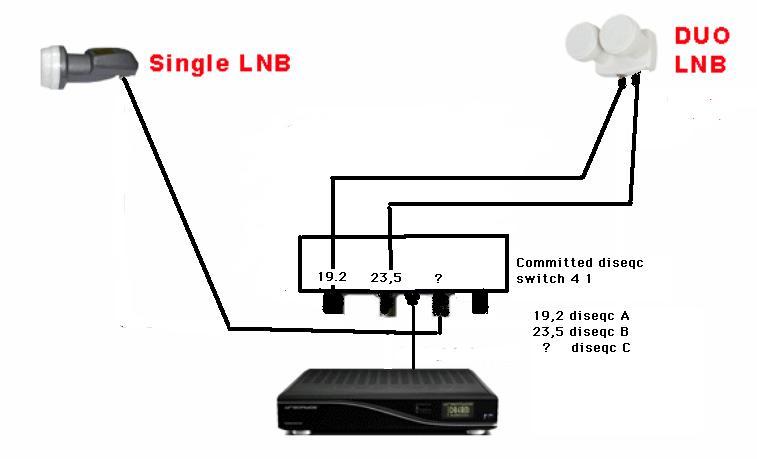Still a bit of explanation:
One diseqc command is meant to make contact to one LNB only. Whether the proper connection to the LNB is made by one switch, or by a series of switches, is not important (just as with a light switch!).
In this case the path to diseqc port A or B of the monoblock LNB is first made in the external 4/1 diseqc switch, and then again in the monoblock itself, which indeed has a 2/1 diseqc 1.0 switch inside.
I've once tested this serial principle with a series of 7(!) switches. The switching went OK, but the signal was attenuated too much to have a picture....
The beauty of diseqc is that is you can use it for both serial, and parallel use. Very versatile!
So what I am confused about if the monoblock has one output and I use the T and go into two ports of my diseqc switch.
....
What I'm confused about what dictates how to switch LNBs inside the monoblock. The information seems to indicate there is another diseqc inside the monoblock.
With the 4/1 diseqc switch you can switch to ABCD.
A monoblock has indeed an internal diseqc switch for two ports.
You can use the AB commands for the monoblock (and by the way, CD for a second monoblock).
The monoblock must therefore receive both the A and B command. That is where the splitter on ports A and B of the external 4/1 switch comes in: in both cases it gives power and a repeated command to the monoblock.
Monoblock and diseqc: A monoblock is made to switch on the so-called POSITION command of diseqc 1.0 (committed).
That means you can reach the two LNBs of a monoblock:
with commands A and B,
or with C and D,
or with A and D,
or with C and B.
Your diseqc commands must follow the actual, physical, setup that you have.
I hope I've explained better, this time?
greetz,
A33



